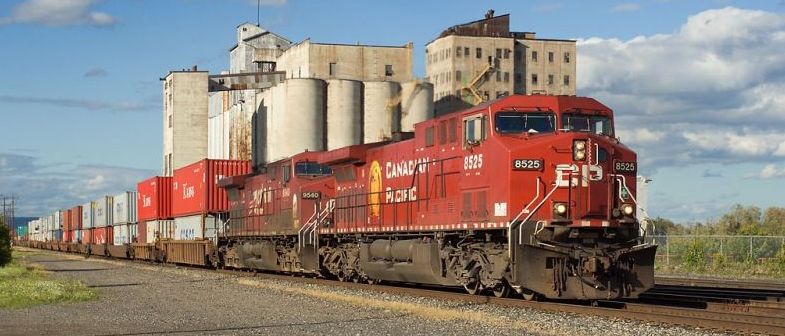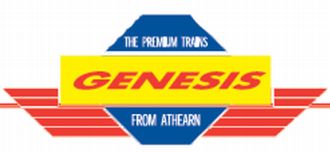
Train Addiction Help Line: 1.866.840.7777
Athearn Genesis - HO Scale - EMD FP7 - Tsunami2 Sound/DCC - Burlington Northern - #9792 - Green and Yellow with White Lettering Passenger Ex GN Scheme (SKU 141-22817)
Available On: October 1, 2017

The EMD FP7 was a 1,500 horsepower (1,100 kW), B-B dual-service passenger and freight-hauling diesel locomotive produced between June 1949 and December 1953 by General Motors’ Electro-Motive Division and General Motors Diesel. Final assembly was at GM-EMD’s La Grange, Illinois plant, excepting locomotives destined for Canada, in which case final assembly was at GMD’s plant in London, Ontario. The FP7 was essentially EMD’s F7A locomotive extended by four feet to give greater water capacity for the steam generator for heating passenger trains.
While EMD’s E-units were successful passenger engines, their A1A-A1A wheel arrangement made them less useful in mountainous terrain. Several railroads had tried EMD’s F3 in passenger service, but there was insufficient water capacity in an A-unit fitted with dynamic brakes. The Atchison, Topeka and Santa Fe Railway’s solution was to replace the steam generators in A-units with a water tank, and so only fitted steam generators into the B-units. The Northern Pacific Railway’s solution was to fit extra water tanks into the first baggage car, and to pipe the water to the engines. The real breakthrough came when EMD recognized the problem and added the stretched FP7 to its catalog.
A total of 381 cab-equipped lead A units were built; unlike the freight series, no cabless booster B units were sold. Regular F7B units were sometimes used with FP7 A units, since they, lacking cabs, had more room for water and steam generators. The FP7 and its successor, the FP9, were offshoots of GM-EMD’s highly successful F-unit series of cab unit freight diesels.
F3s, F7s, and F9s equipped for passenger service are not FP-series locomotives, which although similar in appearance have distinctive differences, including but not limited to the greater body length. The extra 4 ft (1.2 m) of length was added behind the first body-side porthole, and can be recognised by the greater distance between that porthole and the first small carbody filter grille. The corresponding space beneath the body, behind the front truck, was also opened up; this either remained an empty space or was filled with a distinctive water tank shaped like a barrel mounted transversely.
LOCOMOTIVE FEATURES:
All units are powered
Factory installed SoundTraxx Tsunami2 sound and DCC decoder
Tsunami2 sounds are compatible with both DCC and DC operation
DCC Quick-Plug equipped (without sound only)
Genesis driveline with dynamically balanced five pole skew wound motor and dual flywheels
Directional constant lighting
Separately applied photo etched metal and injection molded detail parts
Cab interior
ALL BN UNITS FEATURE:
#9792:
BN “patched” numbers and paint
Cut-away side skirts with battery box door and fuel filler detail
Tall F3 style radiator fans
Authentic Northern Pacific “Lowey” scheme
Era 1970-1973
#9794:
BN “patched” numbers and paint
Blanked forward porthole, as per prototype
Cut-away side skirts with battery box door and fuel filler detail
Low F7 style radiator fans
Authentic Northern Pacific “Lowey” scheme
Era 1972-1976
#726:
Blanked forward porthole, as per prototype
Cut-away side skirts with battery box door and fuel filler detail
Low F7 style radiator fans
Freight service – steam generator removed
Burlington Northern repainted 1976
Era 1976-1980

$289.98 US